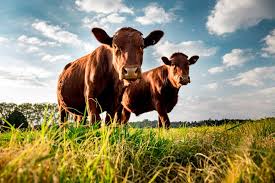Foot and Mouth Disease : In News

The 16 chitals, or spotted deer, that died recently at the Rajiv Gandhi Zoological Park in Pune were afflicted with Foot and Mouth Disease (FMD), lab reports have confirmed.
- It is a highly contagious viral disease that affects all cloven-hoofed animals, including cattle, sheep, goats, camelids, deer, and pigs.
Cloven-hoofed animals are those with divided hooves. - It does not affect horses, dogs, or cats.
- Intensively reared animals are more susceptible to the disease than traditional breeds.
- It is a transboundary animal disease (TAD) that deeply affects the production of livestock and disrupts regional and international trade in animals and animal products.
- The disease is estimated to circulate in 77% of the global livestock population in Africa, the Middle East, and Asia, as well as in a limited area of South America.
- It is not a human health or food safety threat.
- It is also not related to hand, foot, and mouth disease, which is a common childhood illness caused by a different virus.\
- The organism which causes FMD is an aphthovirus of the family Picornaviridae.
- There are seven strains (A, O, C, SAT1, SAT2, SAT3, and Asia1), which are endemic in different countries worldwide.
- Immunity to one type does not protect an animal against other types or subtypes.
- The FMD virus is transmitted via direct contact with infected animals or indirect contact with secretions or excretions (including semen and milk) from infected animals or by mechanical vectors (people, horses, dogs, cats, birds, vehicles) or air movement over land or water.
- The virus can enter the host via inhalation, ingestion, or through skin wounds and mucous membranes.
- FMD is characterised by fever and blister-like sores on the tongue and lips, in the mouth, on the teats, and between the hooves.
- Ruptured blisters can result in extreme lameness and reluctance to move or eat.
- Other frequent symptoms are fever, depression, hypersalivation, loss of appetite, weight loss, growth retardation, and a drop in milk production, which can persist even after recovery.
- The disease causes severe production losses, and while the majority of affected animals recover, the disease often leaves them weakened and debilitated.
- The disease is rarely fatal in adult animals, but there is often high mortality in young animals.
- It was the first disease for which the World Organisation for Animal Health (WOAH, founded as OIE) established official status recognition.
- Vaccines for FMD are available but must be matched to the specific type and subtype of virus causing the outbreak.




